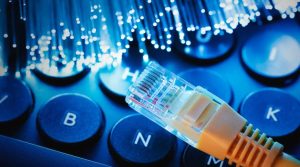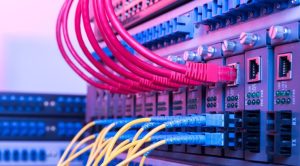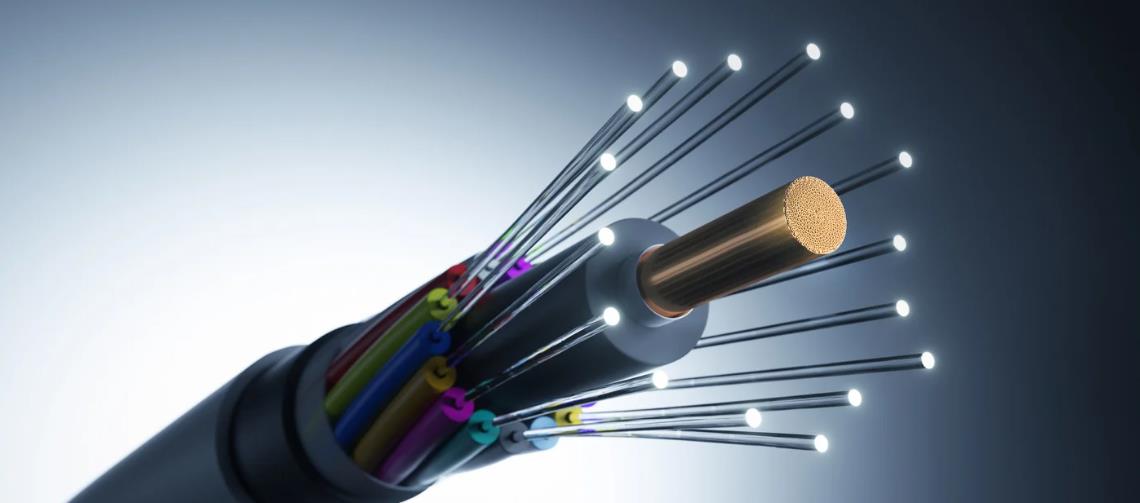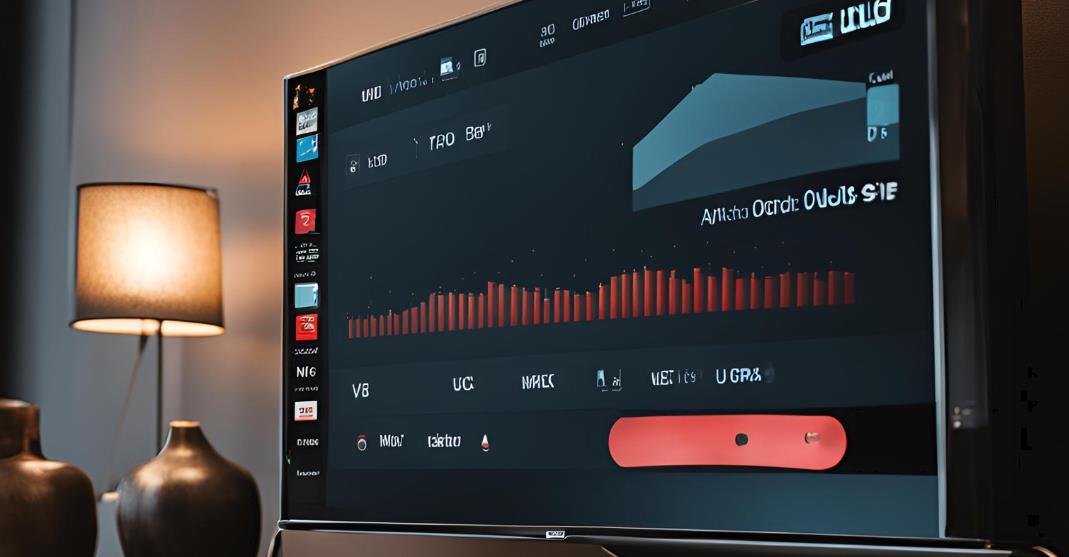The world is evolving rapidly as well as communication technology. The fiber optic cables technologies are dominating all the communication process and data transactions. Even in long distance and across the world, the fiber optic cables are connecting all around the world. But which data encoding technology is used in fiber-optic cables? Or what makes these cables so efficient? A significant factor is the data encoding technology used with these cables that ensure more accurate and faster data transmission. All your doubts can be cleared by going through this blog.
What Is a Fiber Optic Cable?
Fiber optic cables are the most significant part in this digital age. This is the one who is responsible for all transmission of data in the form of light. These are replaced by the traditional copper wires that transmit via electric signals and slowly transmit data. These fiber optic cables use light to transfer the data in accurate and fast speed. This enables a worldwide connection.
Fundamentals of Fiber Optic Cables: Structure, Components, and Light Transmission

1. Structure and Components of Fiber Optic Cables
When it comes to structure and component, the fiber optic cables consist of multiple layers that are designed to protect and guide the light signals:
- Core: This is the innermost part of the cable and it is made of glass or plastic, where light signals travel.
- Cladding: This layer surrounds the core with a lower refractive index. This will ensure the light remains within the core through total internal reflection.
- Buffer Coating: This will protect the fiber from all types of damage and moisture.
- Strength Members: This will provide tensile strength to the cable. It is also often made of materials like aramid yarn.
- Outer Jacket: This is the outermost layer that shields the cable from all types of environmental factors.
2. Principle of Total Internal Reflection
The total internal reflection is guiding the light signals in the fiber optic cables. This phenomenon occurs when the light hits the boundary between the core and the cladding at an angle that is greater than the critical angle. It will cause the light to reflect back into the core instead of passing through the cladding.
3. Generation of Light Signals
The light signals are the important factor here and they are generated using two main types of sources:
- Lasers: The lasers are capable of emitting highly coherent, monochromatic light that are suitable for long-distance and high-bandwidth transmission.
- Light Emitting Diodes (LEDs): This emits incoherent light over a range of wavelengths and is suitable for shorter-distance communication.
4. Encoding Data onto Light Signals
The main part in every transmission is the data encoding of optic cables. In this case, the data is encoded into the light signals. There are several encoding techniques are there and most important are:
- Amplitude Modulation (AM): This varies the intensity of light and represents binary data (1s and 0s).
- Frequency Modulation (FM): This will change the light’s frequency to encode information.
- Phase Modulation (PM): This will alter the phase of the light wave to carry data.
For example, Non-Return to Zero (NRZ) and Manchester Coding are most used and popular digital data transmission over fiber optics. Here, the former represents data with high and low signals and the latter encodes data with transitions for each bit.
5. Advantages of Fiber Optic Cables
The fiber technology has improved the overall communication and transmissions. There are several benefits for these optic cables over the traditional methods.
- High Bandwidth: Giving the faster data rates compared to copper cables.
- Low Signal Loss: Minimizing the strength of signal over long distances.
- Immunity to Electromagnetic Interference (EMI): Make sure the signal integrity in environments with high electromagnetic noise.
- Lightweight and Flexible Design: The light weight and flexibility helped the installation easier in various settings.
Types and Applications of Fiber Optic Cables

Like the fiber optic cables are diverse benefits, it also had several types and applications.
1. Single-Mode vs. Multi-Mode Fiber
Single-Mode Fiber (SMF):
Core Size: Smaller core (~9 microns).
Light Source: Typically lasers.
Applications: Long-distance communication (up to 100 km) such as telecommunication networks and undersea cables.
Example: G.652 and G.655 standards used in telecommunications.
Multi-Mode Fiber (MMF):
Core Size: Larger core (~50-62.5 microns).
Light Source: Typically LEDs.
Applications: Short-distance communication (up to 2 km) such as in local area networks (LANs).
Example: OM1, OM2, OM3, and OM4 cables used in data centers.
2. Specialty Fiber Optic Cables
Armored Fiber Optic Cables:
Structure: This includes an extra layer of protective armor for preventing further damages.
Applications: Very much suitable for harsh environments such as outdoor installations or industrial settings.
Ribbon Fiber Optic Cables:
Structure: This contains multiple fibers arranged in a flat ribbon and allows for high-density cabling.
Applications: This can be the backbone of high-capacity data centers and telecommunication.
Undersea Fiber Optic Cables:
Structure: This is highly durable with multiple protective layers. It also includes steel and waterproofing materials.
Applications: Connecting continents for global internet traffic, such as the Marea cable system between the U.S. and Europe.
Installation and Termination of Fiber Optic Cables: Step-by-Step Guide
1. Planning and Designing the Network
The first stage is to assess the network requirements that includes the band width and distance. In this stage, the fiber type has also been chosen as per the appropriate need and use.
2. Preparing the Installation Pathway
In this second step, prepare the pathway with a clear label that is free from all types of obstructions. This installs the conduits and tray as needed.
3. Installing Fiber Optic Cables
The third step is installing the cables by gently pulli it through the designated pathways. Also make sure that not any excessive bending or stretching prevents the damage.
4. Termination Techniques: Fusion Splicing vs. Connectorization
The termination technique includes fusion splicing and the connectorization. Here, fusion splicing includes the melting and fusing the fiber ends to create a seamless connection. For this, a fusion splicer is essential. It has permanent and high quality connections.
When it comes to connectorization, epoxy and mechanical connectors are used. In this method, attach connectors to the fiber ends for flexible and reconfigurable connections.
5. Testing and Verification
In this stage, the Optical Time-Domain Reflectometer (OTDR) is used to measure the signal loss and identify faults. Also the network meets performance standards and working has to be verified.
Fiber Optic Cables in Networking: Expanding Connectivity
There are certain fiber optic cables that are integral to various networking environments:
1. Local Area Networks (LANs)
This can be used in short distances within the buildings like campus and enterprise networks.
2. Wide Area Networks (WANs)
This will have single mode fibers that are essential for transmitting the data across cities and countries. This connects multiple locations over a very long distance.
3. Data Centers
These are very high density ribbon type cables used to support the high band width. The cables have multi mode fiber supports that demand modern data centers. Few examples for this are 40G and 100G Ethernet applications using OM3 and OM4 fibers.
FAQs on Fiber Optic Cables
How is data encoded in fiber optic cables?
The data is encoded using certain techniques like amplitude modulation, frequency modulation, and phase modulation. This is used to represent binary data as light pulses.
What technology is used in fiber optics?
Fiber optic technology is working on the certain principles of total internal reflection and the use of light-emitting devices (LEDs or lasers) to transmit data over optical fibers.
Which technology uses fiber optic cable?
There are technologies like broadband internet, telecommunication, and IPTV (Internet Protocol Television) that heavily rely on fiber optic cables.
Are fiber optic cables analog or digital signals?
Fiber optic cables can primarily carry digital signals. This can be used to transmit analog signals in specific applications, such as in certain types of television broadcasts.



